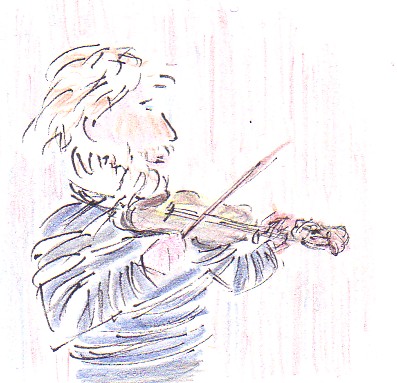
A hidden treat, complete with bugs and poison ivy, awaits Boston cognoscenti. Unless you're on foot and hawk-eyed, you'd likely miss the overly discreet sign for
Allandale Woods where Centre Street joins the VFW Parkway.
This approach seems part of the Department of Conservation and Recreation's stealth parks program. Make the signs small enough in muted enough colors and who knows, maybe no one will mess with your spaces. Public spaces, we don't have no public spaces. We don't need no stinkin' public spaces.
The DCR does not seem to list this on its
recreational opportunities. However, you can use the pulldown list on the Boston parks site for
basic info -- but no map. The city notes:
Composed primarily of oaks, maples, and pines, Allandale Woods is one of the few relatively pristine secondary growth oak-hickory forests in the city of Boston. Trails, laid out by the Appalachian Mountain Club in 1992, run throughout the site leading to various areas of interest including three ponds, several streams, and a marsh.
If you head South, past the Sophia Snow units and Larry Palmer's Mobil gas, turn sharp right up the steep hill just past the DCR sign. It is new, but already a third overgrown. So be alert.
What you get is entry into an 18th Century woods with an early 20th Century stone wall running a mile or more through the middle. This is the second largest wooded space in Boston, about 90 acres. It is the largest
urban wild.
From a few yards away, it doesn't exist. There's the
Greek Catholic Church and a long stretch of nothing in particular along the VFW Parkway. If you run on the adjacent sidewalk, as many locals do, you'd see almost uniformly a steep drop to an overgrown chasm that promises hugely marshy Spring slogging. There is one narrow break in the guard rail to a trail, but it is otherwise totally forbidding.
Back in the woods though, only a few feet off the Centre Street sidewalk, the amazing stone wall starts and goes straight up the hill. You can learn more about it than you need to know in a Walter H. Marx
article reprinted on the JP Historical Society site.
The short of Allendale Woods is that it is pretty much like it was in the 1700s, when it was part of a nearly 300 acre land grant to the Weld family for military service in the Revolution. It is testament to their tenacity or stupidity that they, then the Williamses, farmed it for two centuries. I certainly wouldn't have wanted to work such hilly, forested, rocky soil.
A little over 100 years ago, Mary Pratt Brandegee ended up with this part of the land. In the 1890s, Boston was on a park-expansion tear. This included buying some of this land and adding bridle paths, which are still evident and useful particularly to bikers.
As part of the deal, Boston agreed to delineate her land with a wall, averaging one and one-half feet in width and two and one-half feet in height. As befitting our efficient city, it got around to the construction about 40 years later.
As Marx puts it, "only a mile in length, easily walked or followed within an hour, but in different seasons it has views just as good as those from
Hadrian's Wall...Our local wall has weathered its New England winters well. Here and there the wall's top strip of concrete is gone. But, like Hadrian's Wall it still has some fine straight runs and turns."
He also wonders about the masons' work. How did they get their materials in place and how difficult was it to build up and down steep grades, over streams, and around trees. For all the geographic demands, the wall is amazingly uniform.
Having just walked its length, we offer this detail.
In theory, you could walk on one side or another of the wall for its length. What's the fun in that?
For most of the length, you can be a kid again and stride, sidle or even skip on the wall top. Marx's 1992 article claims little obstruction from overgrowth. In many places, you advance by ducking under, walking over or pushing aside overgrowth.
We found maybe eight places where trees had fallen over the wall, requiring dismount and remount 10 or 30 feet beyond. Likewise, the original wall has a few places where it appears icing and expansion have removed concrete and stone. At least for now, you can manage to walk those.
However the whimsy of the mason seem to rule in a dozen or so places. There are bends around a tree there and there. In another dozen places, the wall breaks for a large tree, also requiring a hop down.
We climbed over quite a lot of poison ivy, but aren't susceptible. In general, long pants and bug spray are wise.
More geometrically challenging are the steep grades. These would be high ranking on Tour de France climbs if they were longer. As it is, we went knees over knuckles and in two places walked the trail beside the wall up the sheerest climbs. The wall wasn't slick; it was just that steep.
While grousing that the article promised of a vista of the Blue Hills, I stopped when that's exactly what appeared. Hot damn.
Amusingly, I envisioned some towering arches over running water. In the photo above, which came from the article, this was a fairy-tale version for small creatures. It was two or three feet, not 30, high.
There lots of birds, wildflowers, forest critters and that musky smell of old growth forest in its lifecycle. That will make you thirsty and curious. Bring water and a camera.
There are multiple trails running perpendicular to the wall as well as beside it. We saw a pair of dog walkers, some tagging evidence (although only a couple of beer bottles), and a mountain biker. No one else was on the wall though.
These Woods are nice place in spots for a picnic or assignation -- wonderful its length for a walk.
By the bye, we didn't take the last 150 feet or so. The wall disappears into several Brookline backyards. The residents have taken command of the wall with overgrowth and barriers to their backyards. (The imperialism of the upper-middle class.)
You want your quiet, your nature and your bit of history? Finding that Woods sign is a good place to start.
 Yet More History:
Yet More History: I just ran across another site,
Heart of the City, that describes this urban wild. It has info, some of which appears on the hidden Woods sign...and more:
Native Americans lived in this area until about 1000 BC. John Winthrop, while he was Governor of the Massachusetts Bay Colony, gave Captain Joseph Weld 285 acres of land in recognition of his service to the colony during the Pequot War of 1637. Part of this land was to become Allandale Woods.
Captain Weld's brother, Reverend Thomas Weld, settled here and used black slave and Native American labor to grow rye, corn, squash, pumpkins, apples, beans, and tobacco. In 1806, Weld sold part of the land to Benjamin Bussey, who established the Arnold Arboretum. He passed another part of the land on to Thomas Williams. Subsequently in 1894, part of the land was sold to Faulkner Hospital and part was sold to the City of Boston to establish a parkway that would connect the Arnold Arboretum to Franklin Park (Heath & Primack. Allandale Woods: A Fragment of the First Families of Boston. 1991).
A springhouse was built here in 1870 to provide water to residents, and the area was soon famous for the healing effects of its water. In 1876 the Allandale Mineral Spring Water Pavilion opened. The spring claimed to be able to cure "dyspepsia, kidney problems, diabetes, gravel, canker, dropsy, catarrh, nervousness, bladder diseases, constipation, eczema, and all skin diseases"
So the rest of JP was busy building breweries with the great water but the Allendale folk had loftier, if less routinely satisfying, ends.
Tags:
massmarrier,
Boston,
urban wild,
Allandale Woods,
Jamaica Plain








